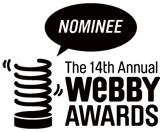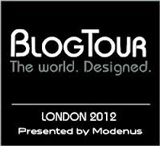Oh Mycelium! Products and DIY Projects Made From Mushrooms
July 30, 2016 by Robin Plaskoff Horton
 Ecovative Interior’s Wall Flower acoustic tiles. Photo via Ecovative.
Ecovative Interior’s Wall Flower acoustic tiles. Photo via Ecovative.
There’s a fungus amongus and it’s sprouting some cool designs. For sustainable and innovative industrial design solutions, designers and manufacturers are growing mycelium-based materials to replace wood and plastic foams.
Ecovative Design is at the vanguard of developing and producing renewable biomaterials for a variety of versatile, healthy, and safe products.
 Ecovative Interior’s acoustic wall tiles. Photo via Ecovative.
Ecovative Interior’s acoustic wall tiles. Photo via Ecovative.
Fusion of Form and Fungi
Ecovative’s recently launched Ecovative Interiors offers wall tiles, lighting, and furniture made with MycoBoard and MycoFoam. The interior acoustic tiles, below, are an eye-catching fusion of form and fungi.
 Ecovative Interior’s woven tiles. Photo via Ecovative.
Ecovative Interior’s woven tiles. Photo via Ecovative.
Mushroom Packaging and Floral Foam
In partnership with Sealed Air Corporation, Ecovative produces Restore™ Mushroom® Packaging, a sustainable material from which they grow custom packaging solutions and even floral foam.
 Ecovative Myco Foam for the floral industry. Photo via Ecovative.
Ecovative Myco Foam for the floral industry. Photo via Ecovative.
Growing and Glowing: Lighting
Danielle Trofe, whose Indoor Hydroponic Vertical Screen we featured in 2012, used Ecovative’s Grow-It-Yourself Mushroom® Materials to create her line of MushLume lights.
“All of the lamps are grown, not manufactured,” said Trofe. “By harnessing innovative technologies and material sciences to create functional and accessible design, I aim to encourage a departure from conventional materials and production techniques in search of long-term, sustainable solutions.”
 Jonas Edvard’s mycelium lamp shade spotted at Maison et Objet 2016. Photo via Jonas Edvard.
Jonas Edvard’s mycelium lamp shade spotted at Maison et Objet 2016. Photo via Jonas Edvard.
GIY: Grow It Yourself
In 2014, Ecovative introduced their “GIY Grow It Yourself” kit offering people the opportunity to grow their own objects.
 The Mush-Lume lighting collection is available from Danielle Trofe Design, Get your Ecovative “GIY” kit here.
The Mush-Lume lighting collection is available from Danielle Trofe Design, Get your Ecovative “GIY” kit here.
3D-Printed Mycelium Chair
Studio Eric Klarenbeek designed this mycelium chair, a decorative result from experimentation with 3D-printers and living organisms. I’m not so sure about the comfort factor–the chair may be better for seeing than seating.
 Photo by Benjamin Orgis
Photo by Benjamin Orgis
“We are the first in the world to 3D-print living mycelium, using this infinite natural source of organisms as living glue for binding organic waste,”said Klarenbeek. “Once it’s full-grown and dried, it turns into a structural, stable and renewable material. Combined with 3D-printing it gives us tremendous design freedom,”
Yamanaka Fungal Furniture Collection
Artist Philip Ross grew the Yamanaka furniture collection, below, out of reishi mushroom and oak.

The fungal furniture series is named after Japanese scientist Shigeru Yamanaka, who pioneered the use of fungal cells as a natural binding agent for various materials.


 From L-R: Yamanaka Cross Stool, Tall Yamakanita, Yamanaka McQueen
From L-R: Yamanaka Cross Stool, Tall Yamakanita, Yamanaka McQueen
Mycelium Vessels, Bowls, and Vases
Maurizio Montalti of Officina Corpuscoli leads The Growing Lab, an ongoing research project that explores the application of mycelium for a variety of different objects.
The Future of Plastic, an exhibition curated by Marco Petroni and presented at PLART in Italy, showcased products developed in The Growing Lab.

Part of The Future of Plastic exhibition, Amsterdam designer Maurizio Montalti’s research and experimentation at The Growing Lab resulted in a variety of mycelium vessels.


















 Photos via Maurizio Montalti.
Photos via Maurizio Montalti.
Mushroom Tiles and Textiles: Togs to Towers
“You could imagine making shoes out of mycelium; you could imagine making raincoats,” speculated The Growing Lab’s Montalti, envisioning the possibilities for mycelium as an alternative to traditionally produced textiles.  Mycoworks leather. Photo via Mycoworks.
Mycoworks leather. Photo via Mycoworks.
Into Leather
Designers at MycoWorks have created a new kind of leather, above, that they say feels and performs just like the real thing. Grown rapidly from mycelium and agricultural byproducts in a carbon-negative process, the custom-engineered material is sustainable, versatile, and animal–free.
Growing Field of Mycotecture
The future of “mycotecture” lies with innovative materials like the mycelium bricks used in the construction of the Hy-Fi Towers at The Museum of Modern Art PS1 in New York City.
Ecovative supplied 10,000 mushroom bricks for the 40-foot-tall installation that New York-based architecture firm, The Living, built as part of the museum’s annual Young Architects Program.
Shiro by Leon Van der Veken, below, is a 100% biodegradable stool whose seat is made from mycelium.
MycoCouture?
The wedding gown, above, that Erin Smith designed for Growable Gowns, biodegrades after the special day. Let’s hope the marriage lasts longer than the dress.







 e-mail a friend
e-mail a friend


















Growing fungal mycelium on faeces. – indiebio Pingback said:
[…] Mycelium DIY projects – try these yourself (perhaps start with straw rather than shit as raw material ? ) […]
— December 6, 2018 @ 06:44
This is real an outstanding invasion. I’ll like to known more about it Thanks.
— September 18, 2019 @ 09:16
Hello
Am mushroom grower from Uganda and ive picked an interest and fall in love with your products, they’re so amazing and lovely. I wish i could get a chance to visit your workshops and factories to learn more. Thanks so much
— April 24, 2020 @ 15:14
I’m also a Mushroom grower in Rwanda and now I’m looking for other products that could be gained from planting mushrooms so that I can benefit more.If it is possible can we get in contact so that you can make learn more about Mushrooms profit making .Thank you
— May 20, 2020 @ 21:31
I love your post soo much
— April 10, 2025 @ 02:33